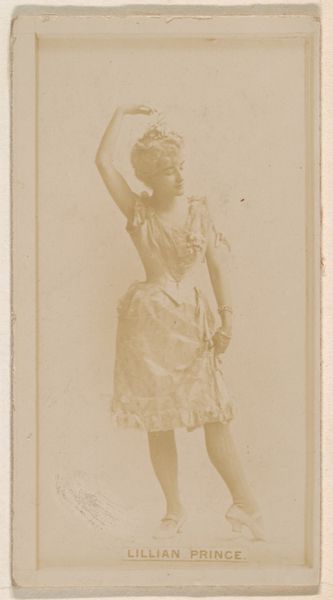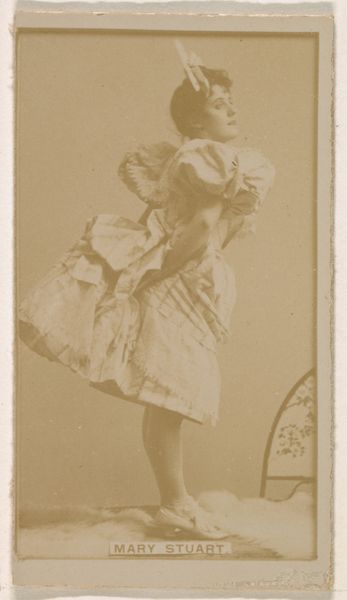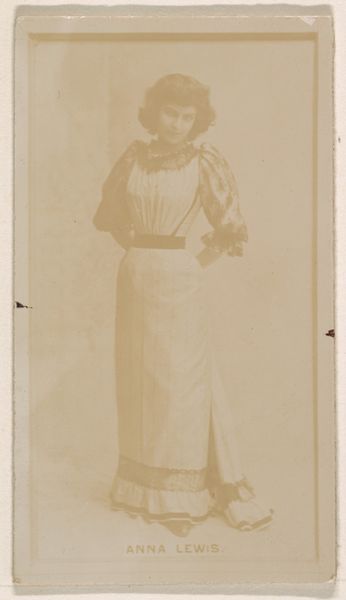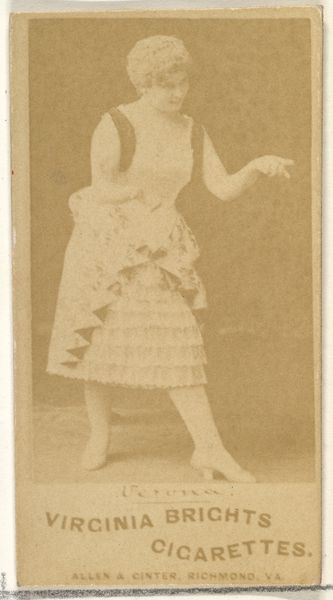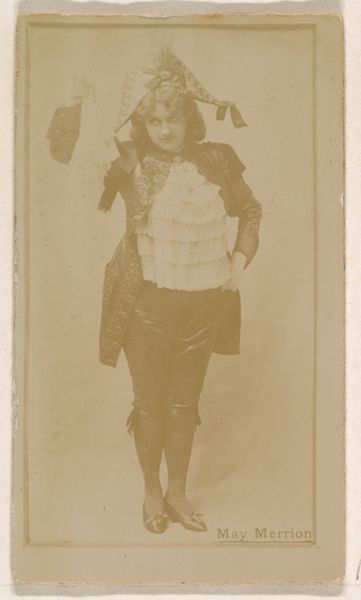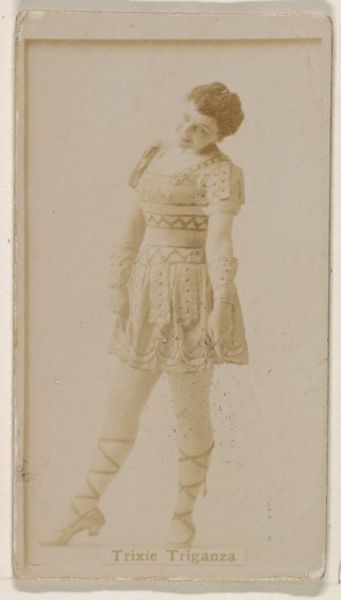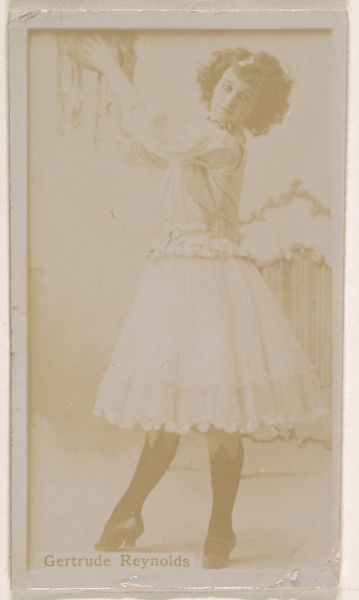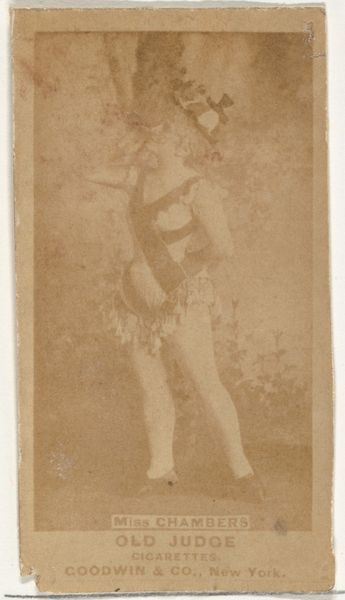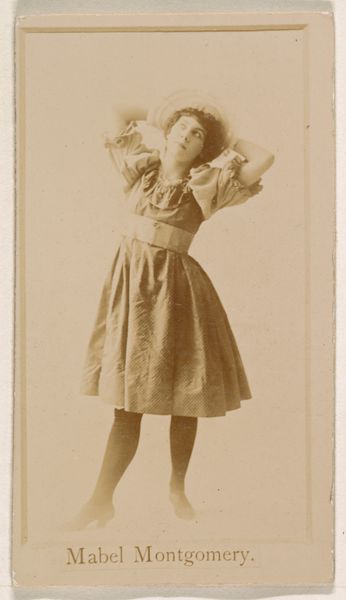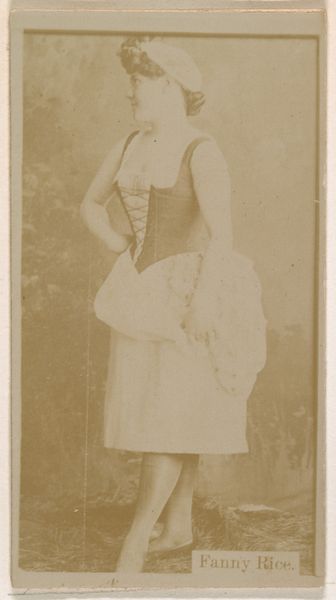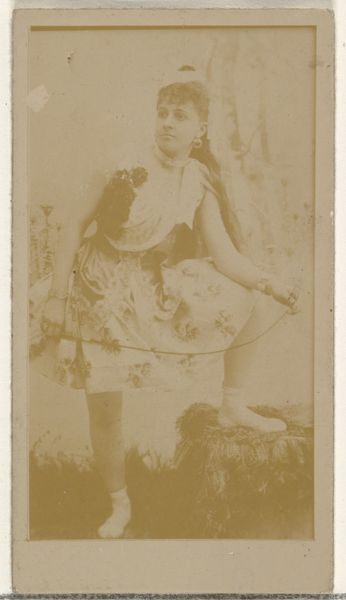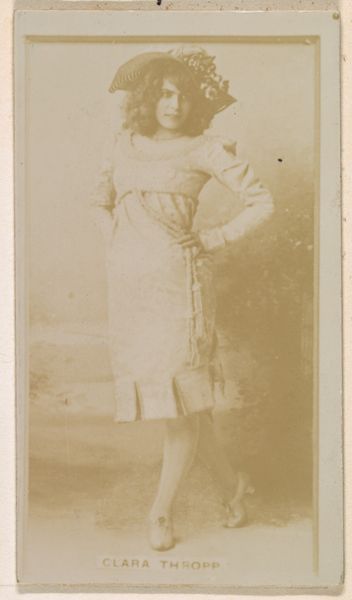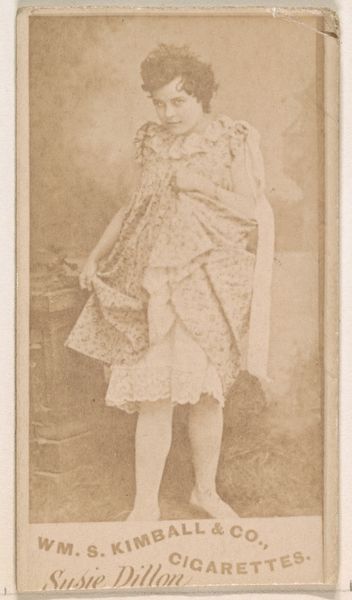
Miss Sleven, from the Actresses series (N245) issued by Kinney Brothers to promote Sweet Caporal Cigarettes 1890
0:00
0:00
drawing, print, daguerreotype, photography
#
portrait
#
drawing
# print
#
daguerreotype
#
figuration
#
photography
Dimensions: Sheet: 2 1/2 × 1 7/16 in. (6.4 × 3.7 cm)
Copyright: Public Domain
Curator: This is "Miss Sleven," a daguerreotype from around 1890, part of the Actresses series (N245) by Kinney Brothers to promote Sweet Caporal Cigarettes. Editor: My first impression? It’s ethereal, almost ghostly, the sepia tone lends such an aged and delicate air. It seems quite small, is it? Curator: Indeed. These tobacco cards were popular trade items. Their material nature belies a potent nexus of labor and leisure, tobacco farming, photography, mass printing… Consider the cigarette itself, its own story of industrial production and global distribution embodied here. Editor: Precisely! These small portraits were instruments for creating celebrity, yes, but let’s think about the socio-economic framework that created them. They are small and flimsy by design. Curator: It reflects anxieties of the time, of changing gender roles with women entering performing professions, thus offering the tobacco cards with women images as escapist ideals. We are looking at commodification, mass production and women empowerment through visual culture. Editor: Consider that the photographer’s labor – the capturing and developing the image – directly fueled an industry linked to health concerns! Not only is she posed in such a theatrical way that her figure is objectified but it became a vehicle to promote such mass consumerism in late 19th-century society. Curator: Certainly. We need to situate "Miss Sleven," within debates on cultural commodification. To think of the daguerrotype not merely as an aesthetic product but also as a symbol. One wonders about Miss Sleven herself… the limited authorship. Editor: It reveals much. Daguerrotypes may look elegant in a gallery display but, understanding their use as cigarette-packet collectibles illuminates this piece's full implications within commerce, performance, identity and the very means of mass reproduction. It takes the craft and recycles it as pop art. Curator: So the art becomes the intersection of consumer culture, performance, and photographic innovation and the artist's signature hidden under an idealized image used in the commodity itself. Editor: Absolutely, thinking about "Miss Sleven", forces one to confront materiality and function, allowing it to take a form where social consumption and artistic expression interlock to create complex images! Curator: A truly rich cultural object and the basis for many further reflections for understanding labor in historical representation.
Comments
No comments
Be the first to comment and join the conversation on the ultimate creative platform.
